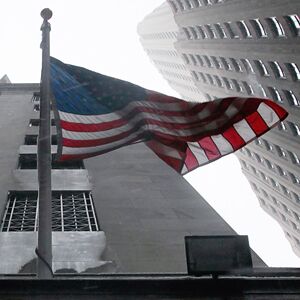
Big Banks Breaking America
We may be approaching teotmsawki: The End Of The Monetary System As We Know It. At least, after Wednesday’s announcement, the risk just went way up.
Central banks around the world announced “unlimited” money to be loaned to struggling banks in Europe. Dollars, euros, yen, pounds, francs, more dollars—it is an all-you-can-eat gourmet smorgasbord for the world’s cash-starved, debt-bloated banks.
And it is another powerful sign that the world’s financial system is on its last legs.
But amazingly, the stock markets didn’t seem to care. To them it was as if the heavens opened and manna rained down. But it is a strange kind of food. Fiat fare. Money out of thin air. You might not realize this, but the central banks of the United States, Canada, Britain, Switzerland, Japan and Europe don’t actually have any real money on hand. That’s how messed up our financial system is. The central banks are all broke. Any real money they had is long spent.
All the central banks have left are their magic money-making machines. If only real food and wealth could be created so easily.
So the bankrupt world’s central banks promised to lend as much money to bankrupt private sector banks as they can chow down on, at least until 2013. Even China loosened its belt, letting its banks reduce the amount of cash reserves they hold, in order to spur more lending.
By then, some hope the stricken global economy will be back on its feet and growing its way out of its debt problems. But between now and then, all that new money has to go somewhere. We are potentially talking trillions of dollars—only stock and bond markets can absorb that kind of growth-hormone-packed feed. So the stock market rallied, and investors hoped they would soon digest all the new fiat food.
But why did the Federal Reserve suddenly decide to lead the charge to “save” Europe? Didn’t White House spokesman Jay Carney just say that no taxpayers’ dollars would be risked to help Europe?
As it turns out, American banks have, in one way or another, leveraged themselves up on European debt. On October 21, MF Global collapsed. It was—is—a very big deal. MF Global was a primary dealer. It was one of just 20 mega banks given special privileges like being able to borrow money below market price directly from the Federal Reserve in exchange for helping conduct open market operations pursuant to U.S. monetary policy.
Needless to say, MF’s collapse came as a total shock. Federal Reserve-approved banks are not supposed to fail.
It has since been revealed that MF Global was leveraged 80 to 1. In other words, it had borrowed and “invested” 80 dollars for every one dollar it actually had. When it suffered just a small loss on the money it had loaned European governments like Spain and Italy, it wiped it out. Then making matters worse, it apparently used its clients’ money to try to hide its losses.
MF Global was a $40 billion bankruptcy.
MF Global is the tip of the iceberg.
Just one day before the Federal Reserve’s decision to offer unlimited loans to banks, Standard & Poor’s ratings agency announced that it had downgraded 15 U.S. banks, including giants Goldman Sachs, JPMorgan Chase, Morgan Stanley and Bank of America.
Coincidence? Hardly. Goldman Sachs, JPMorgan, Morgan Stanley and Bank of America are all primary dealers—just like MF Global. And they too are exposed to European debt. You can still hear echoes of their collective cry.
According to the Bank of International Settlements, U.S. banks have at least $767 billion worth of exposure to the European debt market. Not only have they directly lent $181 billion to European governments and banks, but they have sold an astounding $518 billion worth of default insurance—for which they do not have reserves set aside against default.
So America coming to the rescue of Europe was really just another bank bailout of the too-big-to-fail Wall Street giants.
Last month, Bloomberg finally won its freedom-of-information request for access to information regarding the Federal Reserve’s bailout of Wall Street 2008-2009. The details are astonishing and shocking. At the time America’s banking giants were reassuring shareholders about how financially sound they were, Bloomberg reports that America’s banks were so short of money that the Federal Reserve lent them $1.2 trillion on one day alone in December 2008. At one point, the Federal Reserve had committed $7.7 trillion to keeping the economy from collapsing.
The Federal Reserve had to commit the equivalent of over half of America’s gross domestic product to stop the system from collapsing. That is how fragile and out of control America’s financial system is. Remember, this is money the Federal Reserve does not have. If the world called the Fed’s bluff, the Fed would have been forced to create that money out of thin air—and what do you think that would have done to the value of the dollar?
Perhaps that is why South Korea just purchased another 15 metric tons of gold, upping its precious metal reserves by 39 percent. Perhaps that is why authorities in China actively encourage their citizens to own gold and prohibit the export of it. Maybe that is why German politicians routinely suggest other countries put up their gold reserves as collateral for German bailouts.
The solutions presented by the world’s authorities will at best delay the day of reckoning. Lending more money to debt-stricken banks does not fix a problem of too much debt. Meanwhile, it does a lot to cheapen the value of the money and destroy confidence in the dollar.
The world’s financial system, of which America is the core, is close to cracking. It is just a matter of time before the end of the monetary system as we know it. The imminent risk has gone way up.
